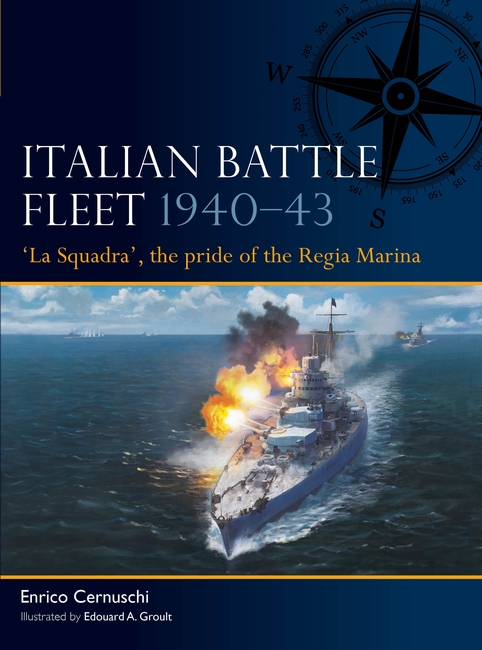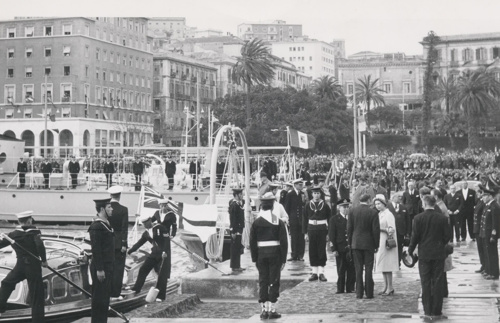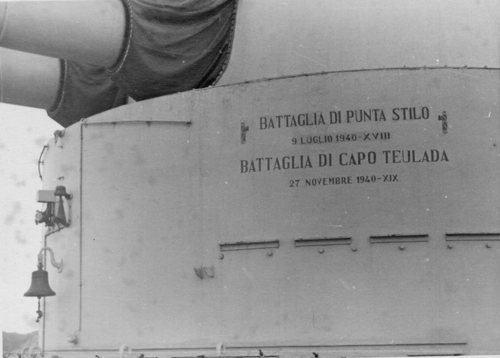
Although Italy was the smallest of the great powers fighting World War II, it still had colonies, settlements and interests from Africa to China and Latin America. As it was a co-belligerant state after the 1943 armistice (1), the Italian navy archives were not acquired by the Allies, nor by the Germans, as both the contemporary Rome Open City government and the later fascist Italian Social Republic were able to avoid these documents being seized or tampered with. It contains a trove of gunnery reports from all the Italian warships involved in actions against the Royal Navy, which, once compared with the original proceedings of the opposing Royal Navy ships (not with the general digests published after the war) allows us to reconstruct the engagements in the Mediterranean in a very detailed way, quite different from the crude and generic information still often found in English-speaking literature.
Since 1991, my researches have been largely based on this bonanza. And it’s amazing to note that decisive papers like the Diari di Supermarina (the Regia Marina’s Central Command diary) are almost never recorded in bibliographies and that very few excerpts are quoted from the 122 volumes of that primary source.
English-language histories of the Regia Marina before or during World War II too often offer readers little or nothing that is supported by archival documentation, just rebooting misleading information that is ultimately derived either from wartime propaganda or from the bitter fascist polemics unleashed against the navy after the armistice, when the Regia Marina obeyed at once the King’s orders to cease hostilities against the American and the British forces. Further misleading information entered circulation during the Fifties, when American and British historians picked up some German admirals’ memoirs, written when they were PoWs in Allied hands. The nature of those memoirs was someway suspect, but they were readily available, tickled the self-love of the customer, were free, and did not need to quote the real authors. Their narratives were used despite being inaccurate, misleading and bitterly biased.
Today, the comparison of Italian and British original reports provides plenty of new information, solves some mysteries, and reveals a lot of unknown episodes and details for shiplovers and scholars.
To deal with only one topic, there is a general belief that there were serious problems with Italian fire-control and gunnery in general. This belief stems not only from British wartime propaganda, but also from Italy’s own fleet commander, Angelo Iachino, who in January 1946 published a book (Gaudo and Matapan) making these claims. However, both the wartime reports and Iachino’s own declarations at the time were exactly the opposite; in 1940–42 he had been very critical of the standards of British naval gunfire, labelling it as ‘wild and inaccurate’. Iachino had been placed in the reserve in 1945 while he was in Rome by a political commission of inquiry and was discharged only the next year. His 1946 claims were immediately and sharply refuted by other admirals and commanders, but the original version was later used freely by some polemical writers, very critical of the Italian navy in the wake of the 1943 armistice controversies.
Why would Iachino said these things? Was he trying to preserve his own reputation? Cdr Bagnasco said Iachino’s books: ‘… provided a venue for the author to defend his actions as Commnder-in-Chief of the Italian battlefleet during most of the war’. None can claim to know his reasons, but he would not be the first commander to fiddle with the historical record to preserve his own reputation. It is enough to remember Jellicoe, Beatty and The Jutland Scandal by Admiral Sir Reginald Bacon.
Looking at the maths, during the seven major surface day actions (at night the Royal Navy’s superiority over the Regia Marina was, with a few exceptions, the rule) the score of the direct hits (confirmed by both sides) was 24 achieved by the Italians and 14 by the British, while the statistics for shells fired stood at 8,057 and 12,197 repectively. The alleged lack of consistency of Italian naval gunnery, thus, is not based on fact, and the reality is different to the legend.
Today there’s no excuse for inaccurate versions of the events. The modern tradition of Italian naval history scholarship, founded during the Fifties by a great friend and gentleman, the late Aldo Fraccaroli, from 1939 a regular contributor to Jane’s, has returned to a focus on evidence. One of his basic teachings, duty pursued by Cdr Bagnasco, was, for instance, that photography is irrepleacable for serious research when correctly interpreted, dated and annotated.
My book sticks to the facts, may they be for or against the Regia Marina. It does not pretend to change the way people think, but it proposes a lot of novelties in context alongside the contemporary British records.

Naples, 2 May 1961. Queen Elizabeth II and H.R.H. Prince Philip have just landed from HMY Britannia. They are welcomed by Admiral Pietro Zancardi. During the Night Action off Cape Matapan, on 28 March 1941, Zancardi was First Gunnery Offier of the destroyer Alfieri, which was sunk by HMS Valiant; serving on board that battleship was H.R.H., then a midshipman, controlling the searchlight section that was engaged. In 1975 a page from Prince Philip’s wartime diary revealed Valiant had been hit by a 4.7in shell fired by the Alfieri flotilla. Peace always follows war, and between navies, style and etiquette are the rule. (Author's Collection)


Two examples of the original documents in the Ufficio Storico della Marina Militare. The first concerns Admiral Weichold's unfair attitudes about the Italian Navy (the British had been amazed by such behaviour and asked the Marina Militare to comment on the German admiral’s writings). The second lists questions the Italian Navy put to the British Admiralty as soon as possible (in 1947, shortly after the peace treaty), as the Regia Marina internal records and the Royal Navy reports as published by the press or broadcast by the BBC were noted to be totally different. (Archivio dell'Ufficio Storico della Marina Militare, Rome. Fondo Collezione A, Atti dell'Ufficio Storico. Miscellanea,1947)

La Spezia, 20 July 1941. The Italian battleship Cesare’s 12.7-inch turret ‘B’, reporting the two actions where that warship was present: Punta Stilo (Action off Calabria, 9 July 1940) and Capo Teulada (Cape Spartivento, 27 November 1940). They are the equivalent of British battle honours. The Roman numbers XVIII and XIX are for Era Fascista (E.F.), meaning the years of the fascist government, starting from the March on Rome (28 October 1922). (Author's Collection)
NOTES
1. And not an unconditional surrender, as the US Secretary of State Cordell Hull wrote: ‘In line with this thought, the surrender of Italy the following month, although ostensibly on an unconditional basis, was actually, as I have previously mentioned, a negotiated surrender, and the terms of the armistice were agreed to in discussions in Lisbon, Portugal, between representatives of the Anglo-American Combined Chiefs of Staff and Marshal Badoglio’. The Memoirs of Cordell Hull, Hodder & Stoughton, London, 1948, page 1,571.
2. Silvia Trani and Pier Paolo Battistelli, “The Italian Military Records of the Second World War”, War in History, Volume 17, Issue 3, 2010, pages 345–346.
Enrico Cernuschi is an independent naval historian living at Pavia, Italy. He has authored several dozen books and monographs in Italy, the USA, and France, and more than 600 articles in Italian, English and French. He has also contributed chapters to works published by US Naval Institute Press. His major works include “Ultra” La fine di un mito (Mursia, 2014), Sea Power the Italian Way (Ufficio Storico della Marina Militare, 2017) and, with David Zambon, Les grandes batailles navales et aéronavales de la guerre en Méditerranée 2022. His latest book in Italian is Uomini, donne e macchine cifranti.
You can read more in Italian Battle Fleet 1940–43: 'La Squadra', the pride of the Regia Marina

Comments
You must be logged in to comment on this post. Click here to log in.
Submit your comment